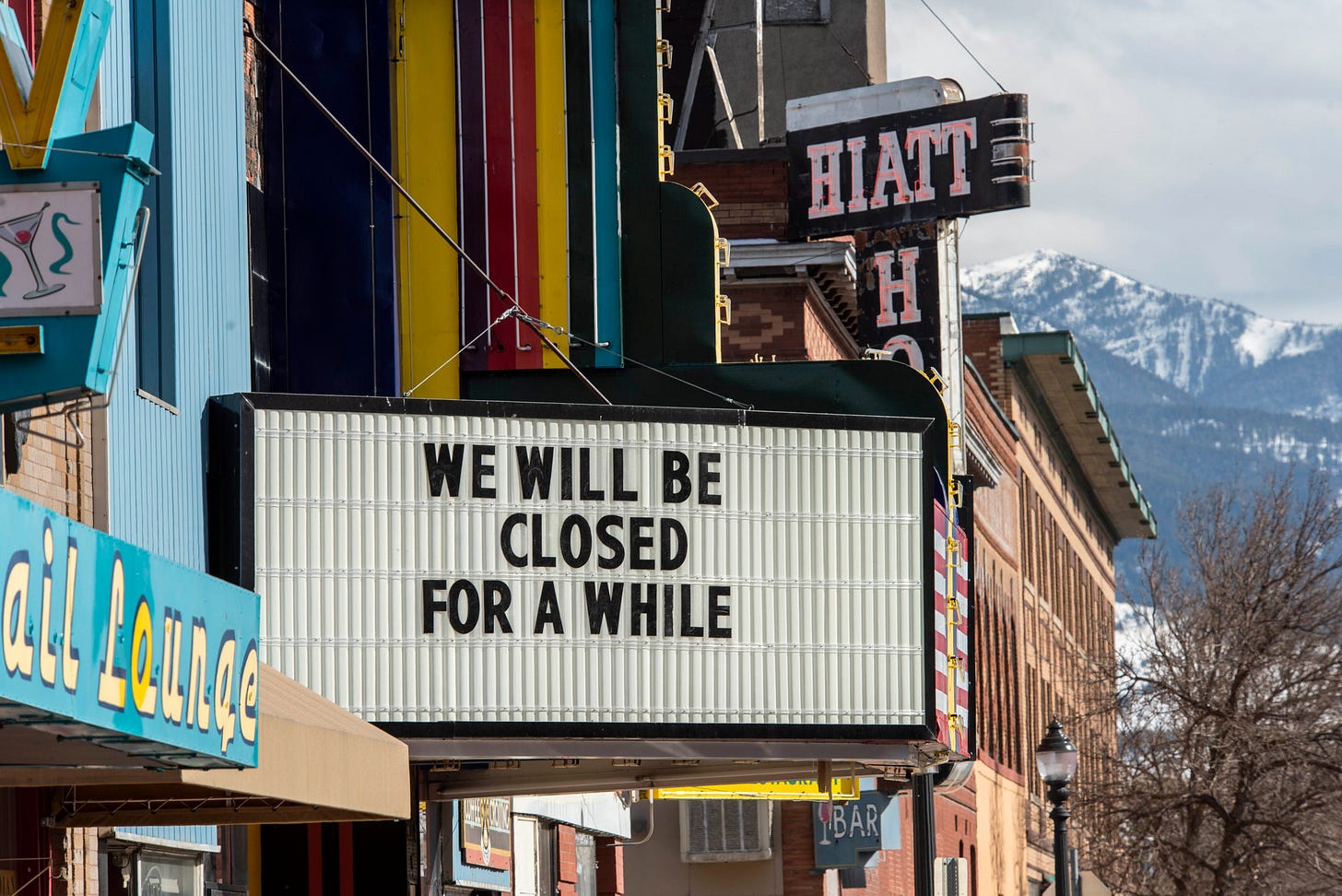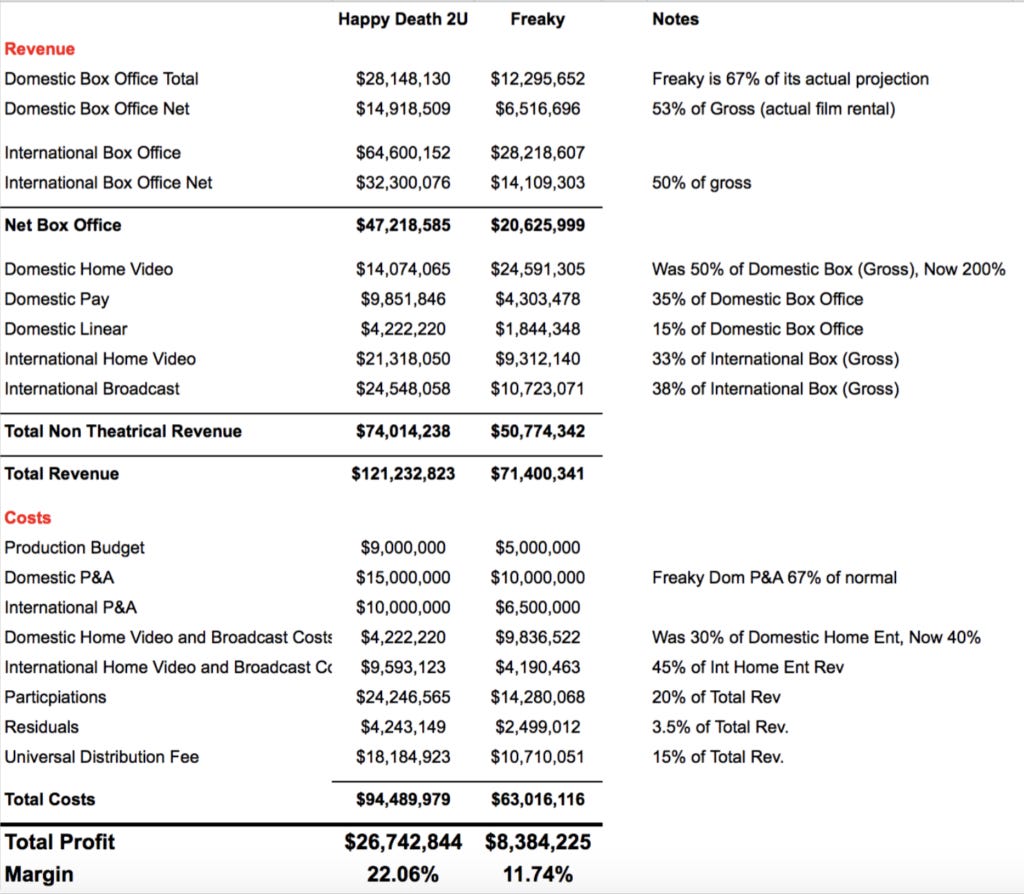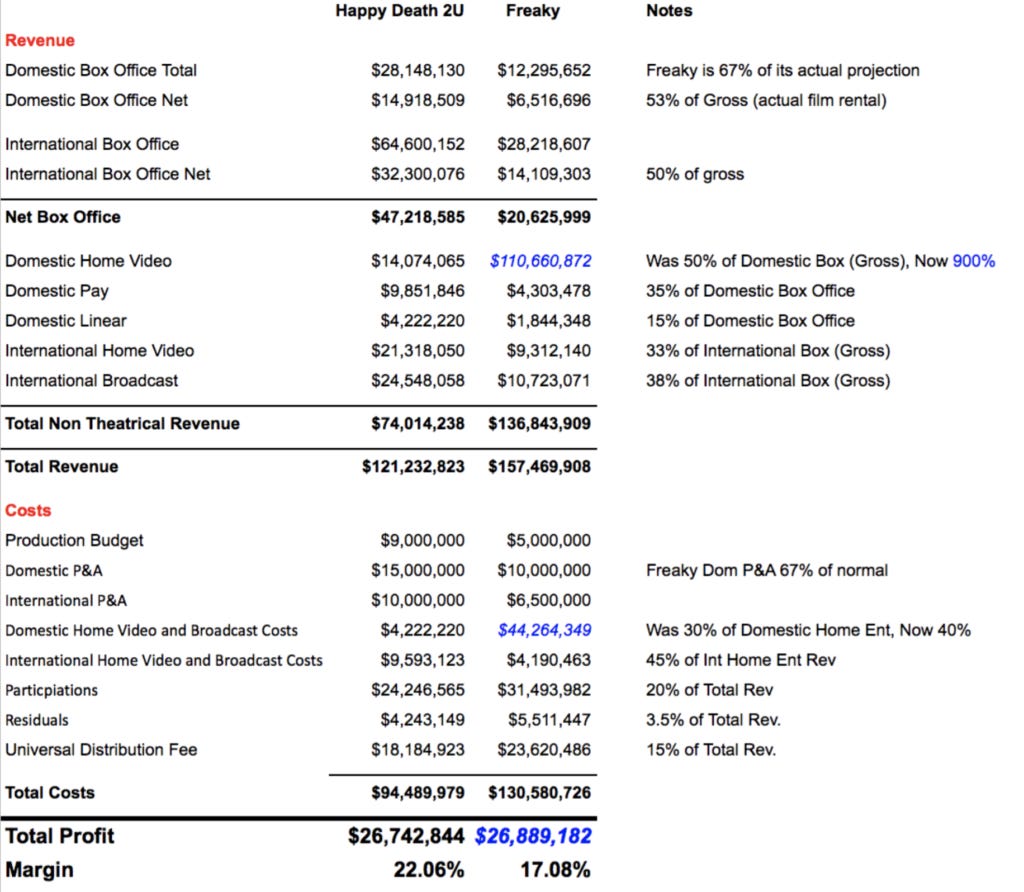Moving Films to VOD Can’t Make Up the Revenue the Traditional Theatrical Model Generates
One low-budget film shows how hard it will be to make up lost revenue from the traditional theatrical model if the window narrows to 30 days.

Recently, I described what I thought a world without movie theaters would look like. One of the first things I predicted that would happen is that the production budgets for movies—even the biggest ones—would be significantly reduced. Without a worldwide theatrical release to boost the film’s awareness and, maybe more importantly, its perceived value, films would make less money across their entire lifespan. Studio movies are expensive and if they can’t recoup their value, the only way to keep making them is to make them cost less.
Since the publication of that piece, Comcast/Universal reached their second agreement with a theater chain to shorten the window from theatrical to other video streams. This differs slightly from their first agreement in that it allows three paths for movies depending on how large their opening weekend is. If a film grosses more than $50 million in its first weekend, Universal can get 30 days (instead of 17 days) of an exclusive theatrical window before putting the film up on digital platforms and DVD/Blu Ray. Essentially, Universal wants a path for their biggest movies to get two more weekends in theaters before the transactional window.
While Universal is still providing a third option of letting a movie play through the traditional 90 window if they want, the mere fact that they are considering giving even their biggest films a shortened window is concerning to me. Even if a movie makes most of its theatrical revenue in that 17 to 30 day time frame—opening weekend grosses account for 44 percent on average, while the first month usually accounts for 86 percent—I believe the importance of the exclusive theatrical window is the buffer it provides between theaters and digital or DVD/Blu-ray. How will the average moviegoer react if they know they only have to wait weeks to watch a movie at home rather than months? Will 30 days be enough to protect the theaters? I don’t believe so. I would like to have at least a 45 or 60 day window. I agree 90 days doesn’t make sense anymore, but just assuming you can still do the same theatrical business with the windowing Universal has settled on is foolhardy.
Without having a strong buffer, a sizable audience will no longer be motivated by theatrical exclusivity and will just watch even the biggest movies at home. While there will be some theatrical business left, the outcome will be similar to the fate I posited in my piece about the death of theaters. Fewer dollars made at the box office will mean smaller budgets for movies as non-theatrical revenue will never replace the dollars or profits studios and smaller distributors make now with a theatrically driven business model. The best way to show this is by doing a comparison between movies that are coming out now with the shortened window and movies that came out prior to the pandemic.
To be sure, I will be making a few assumptions here based on the hundreds of actual profit and loss statements I’ve worked on in the decades of being in the entertainment business. If you’re reading this and you know any errors I’ve made in my assumptions, I welcome that correction and I ask you to make the numbers as public and transparent as you can so this conversation can be as accurate as possible. The main assumptions I’ll be making are:
Movies opening now have a smaller possible audience as most moviegoers will not return to theaters until there is a vaccine widely distributed.
Movies released with a short window will make less box office because some consumers will now wait to see the movie on VOD since they only have to wait 17 or 30 days.
Domestic VOD revenue—which normally is projected to be about 50% of a film’s domestic box office gross—will be much higher as some percent of the audience shifts from theatrical to home viewing.
Since box office will be less, marketing expenses will be less, but some of those savings will be used to place and promote the movie on VOD.
The other assumptions are standard industry multiples used to project revenues and costs off a movie’s domestic box office. How these multiples change over time as the industry shifts to a shorter window and less dependent on domestic box office is anyone’s guess. Will international box office take off? Will international VOD usage finally catch up with domestic VOD? Eventually, you have to think so, although how and when, I just don’t know. Since these assumptions are not educated guesses, I’m going to save them for another time.
What I’ve done here is compare a historical release (Happy Death Day 2U) with the 11/13 release of Freaky—only I did the math so I could adjust its actual box office to a box office with audiences going as they did prior to the pandemic. I then reduced that forecast by 33% to account for the audience that will now wait to see the film on VOD. I believe a loss of 33% is generous as it's likely to be a great deal more for a movie that’s not a four-quad release like Freaky. For our purpose here, I want to be conservative with this estimate.
I picked these movies because they are
Written and directed by the same person (Christopher Landon)
Produced and distributed by the same companies (Blumhouse and Universal)
Made for similar audiences (genre, slightly female and slightly caucausian). Since Freaky is R and Happy Death Day 2U is PG13, the age audience won’t line up, but I don’t believe that affects this analysis.
Finally, it’s worth noting that the deal between Blumhouse and Universal is complicated in terms of how they split the revenue that the movie earns, so for the purposes here, I am treating the film as if Universal owns the film and retains all the dollars. With this in mind, here are numbers:

Even with a four-fold increase in the VOD number, Freaky not only grosses less than Happy Death Day 2U, it also profits less and therefore, has a tighter margin. Freaky would have to do EIGHTEEN TIMES what is now normally expected for VOD—or over $110m on VOD—to match the same profit as Happy Death Day 2U. I don’t believe Universal will spend the dollars needed (over $40m) to get to that VOD number, but I wanted us to see what the threshold would be for the movie to be as profitable as Happy Death Day 2U was.

My point, hopefully, is obvious: a collapsed VOD window will generate fewer dollars and less profit for a movie like Freaky. While Freaky is not on the same level as Universal’s Fast and Furious movies, the result there will still be the same: less revenue and less profit. That means smaller production budgets on everything, from movies that cost $200 million to movies that cost $2 million. I’m not even taking the Wonder Woman 1984 situation into consideration, as that is a different tragedy given that Warner Bros is flushing dollars down the toilet with a film that before the pandemic hit, I thought would have been 2020’s biggest grosser.
The 17-to-30-day window is just too short. While theaters are still getting an exclusive window, it's not a big enough buffer to motivate movie-goers not to wait for that exclusivity to end. A vaccine arriving next year is great, but exhibitors now have to deal with AMC and Cinemark bending to Universal’s will and granting a window that will ultimately negatively affect them and change the way movies are made forever.

